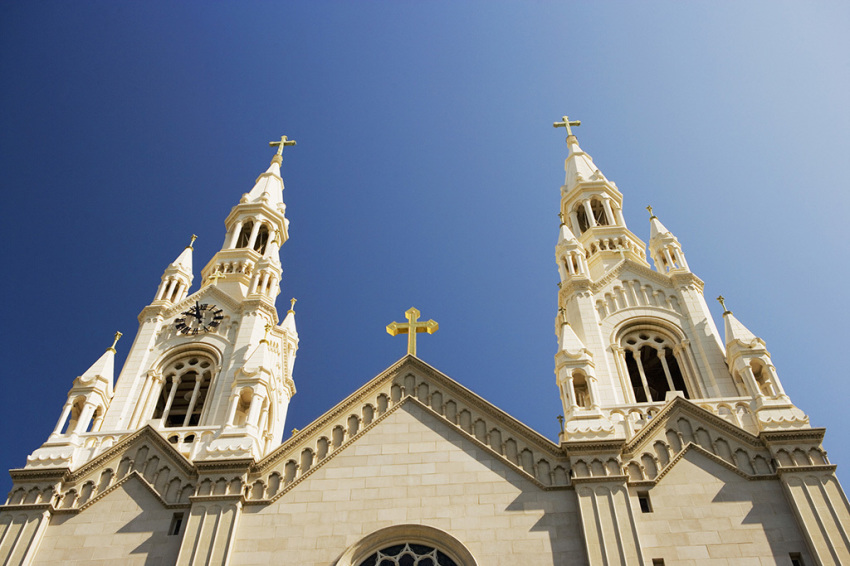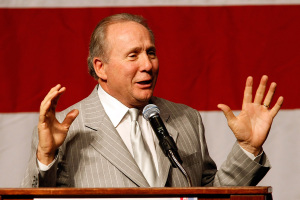Over 18,000 sign petition urging Pope Francis to reverse restrictions on traditional Latin mass

More than 18,000 people have signed a petition urging Pope Francis to withdraw his apostolic letter imposing restrictions on the celebration of the traditional Latin mass, warning that it will cause “further division and hurt among the faithful,” achieving the opposite effect of its stated purpose.
On Friday, Pope Francis published an apostolic letter called Traditionis Custodes, which lays out guidelines “on the use of the Roman liturgy prior to the reform of 1970.” Beginning in 1970, Catholic Churches across the world began to conduct masses in the local vernacular as opposed to in Latin, which Catholic masses had been conducted in for hundreds of years. This reform came about as a result of the Second Vatican Council, which reformed many of the Catholic Church’s longstanding traditional practices.
However, some Catholic Churches still conduct masses in Latin even a half century after the reform of 1970. As the pope wrote in Traditionis Custodes, “In order to promote the concord and unity of the Church, with paternal solicitude towards those who in any region adhere to liturgical forms antecedent to the reform willed by Vatican Council II, my venerable predecessors, Saint John Paul II and Benedict XVI, granted and regulated the faculty to use the Roman Missal edited by John XXIII in 1962” when conducting mass.
“In this way they intended ‘to facilitate the ecclesial communion of those Catholics who feel attached to some earlier liturgical forms,” he added. Citing a desire to “press on ever more in the constant search for ecclesial communion,” meaning church unity, Francis explained that he wanted to take a different course when it came to regulating the practice of the traditional Latin mass going forward.
The apostolic letter illustrated the responsibilities of bishops who lead dioceses where “there exist one or more groups that celebrate according to the missal antecedent to the reform of 1970.” Specifically, bishops are “to designate one or more locations where the faithful adherents of these groups may gather for the eucharistic celebration (not however in the parochial churches and without the erection of new personal parishes.)” This suggests that at some time, traditional Latin masses may no longer be permitted within church facilities.
Additionally, the letter instructed bishops to “take care not to authorize the establishment of new groups” that celebrate the traditional Latin mass. Current and future priests will need permission from their bishops to continue or begin celebrating masses in Latin.
Many Catholics did not approve of Traditionis Custodes and a petition to “Show Pope Francis the Latin Mass will survive any suppression” was published on LifePetitions just three days later. As of Wednesday afternoon, nearly 18,400 people had signed onto the letter, which was addressed to Francis.
“As lay people dedicated to Christ and His Church, we urge you to reconsider your unjust and scandalous treatment of the Traditional Latin Mass,” the petition reads. “We URGE you to have regard for the many souls who benefit spiritually from the Ancient Rite.”
“The Traditional Latin Mass has been a source of unity for the Catholic Church for more than 1500 years, producing great saints, repentant sinners, and souls won for Christ across the world,” it continued. “To attempt to restrict the Traditional Latin Mass as a new generation are rediscovering the treasures of God’s Church will inevitably cause further division and hurt among the faithful, risking the loss of some souls who will regretfully turn away.”
The petition concluded by urging the pontiff to “reinstate the Mass of the Ages to its proper place in the Catholic Church.” As Francis alluded to in Traditionis Custodes, his predecessor Pope Emeritus Benedict XVI “regulated the faculty to use the Roman Missal edited by John XXIII in 1962.”
In 2007, the retired pontiff published an apostolic letter of his own called Summorum Pontificum, giving wide discretion for the use of the Traditional Latin Mass. In the letter, Benedict described the Roman Missal blessed by Pope Paul VI in 1970, which was “translated into various languages throughout the world” as the “ordinary expression of the lex orandi (rule of prayer) of the Catholic Church of the Latin rite.”
At the same time, he characterized the Roman Missal edited by John XXIII in 1962, used at Traditional Latin Masses, as “an extraordinary expression of the same lex orandi of the Church and duly honoured for its venerable and ancient usage.” According to Benedict, “These two expressions of the Church’s lex orandi will in no way lead to a division in the Church’s lex credendi (rule of faith); for they are two usages of the one Roman rite.”
In Traditionis Custodes, Francis expressed disagreement with that assertion, describing the liturgical books translated into vernacular as “the unique expression of the lex orandi of the Roman Rite.” While he gives bishops “exclusive competence to authorize the use of the 1962 Roman Missal in his diocese,” the aforementioned restrictions were imposed on the celebration of the traditional Latin mass.
According to an article in the Jesuit publication America, many Catholic dioceses across the United States will continue to allow Latin masses to take place as they process the implications of the pope’s new apostolic letter. These dioceses include St. Paul and Minneapolis, Baltimore, Oklahoma City and San Francisco.
At the same time, diocesan parishes in the Diocese of Little Rock have been informed that they can no longer offer a traditional Latin mass. The bishop of Springfield, Illinois, informed two parishes in his diocese that celebrate the traditional Latin mass that “Eucharistic celebrations are permitted at these locations using the Roman Missal promulgated by Saint John XXIII in 1962 on any and all days of the year.”
According to the website Latin Mass Directory, which contains a list of venues that celebrate the Traditional Latin Mass, there are 658 such venues in the U.S. There are nine venues offering a Traditional Latin Mass for every one million American Catholics.
Ryan Foley is a reporter for The Christian Post. He can be reached at: ryan.foley@christianpost.com



























